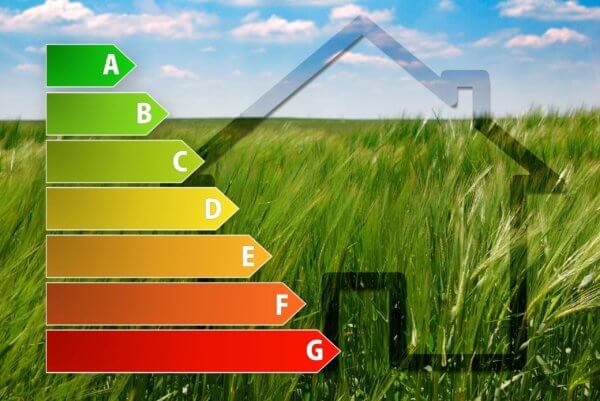The Importance of SEER Ratings When Buying an Air Conditioner
Buying a new air conditioner for your home is a major investment. Before making that venture, it makes sense to understand all you can about the different types of air conditioners. One big difference between various units is the SEER rating of the individual units. Although it’s easy to see the difference between the ratings on each unit, understanding what each rating means can be a bit of a mystery. After you read this guide from Crystal Blue Plumbing Heating & Air, you’ll be a well-prepared HVAC buyer with a better understanding of SEER ratings.
What Does SEER Stand for?
SEER stands for Seasonal Energy Efficiency Ratio. This federally mandated rating measures how much energy a particular air conditioner uses to produce a specific amount of cool air. The idea behind SEER ratings is to allow buyers of air conditioners to make objective comparisons between systems without worrying about the marketing language employed by various manufacturers.
If a system has a higher SEER rating, you know for sure that it is more energy-efficient than a system with a lower SEER rating, even if the lower-tier system looks better on paper. It is always recommended to ask about the SEER rating of a system whenever you have a new air conditioner installed.
Why Is SEER Important?
Consumers who want to reduce their energy usage need to understand the energy efficiency of air conditioners. That’s because a substantial percentage of a home’s energy usage goes to powering its air conditioner. Any reductions in energy usage you can make when using your air conditioner will have a major impact on your energy bill and your environmental impact. By comparing various air conditioning units with an apples-to-apples comparison, you can determine how much money you want to invest to get the best return on your investment over the number of years you expect to use the system.
Understanding the Comparisons
When it comes to SEER ratings, a higher rating indicates lower energy usage. It’s important to understand the differences between the individual ratings so that you know where your money is going when you buy a new system. In general, each step in the SEER rating system represents an increase in efficiency of approximately 7%. Thus, a system with a SEER rating of 13 will be approximately 21% less efficient than a system with a SEER rating of 16.
The current minimum SEER rating for new systems in California is 14, but the maximum SEER rating for a whole-home central air conditioning unit is 25. Most homeowners opt for a SEER rating somewhere between these two numbers.
Dramatic Changes
In 2006, the United States Department of Energy updated its requirements for new air conditioners. This was when the minimum SEER rating was increased to 13 on a national level. In the 1990s, the minimum SEER rating was 10. Before that, the average SEER rating was only six. This means that you’ll see the most dramatic reduction in energy usage if you have an older system, even if you only opt for a system with the current statewide minimum SEER rating of 14. If you have a newer system that you need to replace, you’ll need to choose a system with a higher SEER rating to notice any significant differences in energy usage. Although these systems cost more upfront, the lower energy usage will help offset the costs.
How Do Air Conditioners Become More Efficient?
Another component of air conditioner efficiency that’s important to understand is how air conditioners achieve improved efficiency in the first place. The main way to save energy with an air conditioner is to reduce the energy that the compressor uses. The compressor sits outside your home and compresses the refrigerant to turn it from a gas to a liquid. This compression process takes an enormous amount of energy. In most systems, the compressor works at the same level at all times, even if the interior of the home doesn’t require much cooling capacity.
However, in systems with a higher SEER rating, the system can reduce the amount of energy going to the compressor if the system doesn’t need to pull air from the home as quickly. These multi-stage compressors are great for temperate climates like you’ll find in Sacramento since there is often “free” air conditioning available in the morning, thanks to cool desert nights.
Debating Immediate Replacement
In an effort to improve their home’s energy efficiency, some people opt to replace their air conditioners even if their current systems aren’t at the end of its service life. Unfortunately, this approach does nothing to save money or energy and is not recommended by Crystal Blue Plumbing Heating & Air.
In terms of money, you’ll be wasting money by removing your current system before you realize its full depreciation, meaning you effectively spend more per year on the system than you would if you kept the system until it was no longer functional. In terms of environmental costs, although your new system will use less energy, there is energy required to build and transport your system, which you could offset for a longer period of time if you kept your current system for its entire life cycle.
Maintenance Costs
Without a doubt, efficient systems save money on energy costs. An important consideration for these systems, though, is the potential for higher maintenance and repair costs over the system’s lifetime. Multi-stage compressors and variable-speed fans, two important components of efficient air conditioners, can be expensive to replace because of their highly sophisticated circuitry and complicated mechanical design. Therefore, if you’re going to own a high-efficiency air conditioner, it is imperative that you utilize professionals to perform regular maintenance. Maintaining your system will significantly reduce the risk of a system breakdown and expensive repairs.
Improving Efficiency
Even if it’s not quite time to invest in a new air conditioner, there are still steps you can take to improve the efficiency of your current system. Something as simple as replacing your thermostat with a programmable model can do a lot to help reduce your energy usage without spending a lot of money.
Of course, the always-important air filter replacement is another great way to reduce wear and tear on your system and to ensure that your system can produce comfortable air without using excess energy. Annual maintenance visits from Crystal Blue Plumbing Heating & Air are also helpful when working to keep your air conditioner from being an energy hog.
The Professionals
At Crystal Blue Plumbing Heating & Air, our industry experience allows us to take care of all types of air conditioners in Sacramento. We can maintain, repair, and replace systems from every era. We also work on furnaces and offer a complete lineup of plumbing services, including drain cleaning, sewer repair, water treatment, and much more. We’ve been impressing customers in the area for over 45 years and always love to receive thoughtful and positive reviews for a job well done. Contact us at Crystal Blue Plumbing Heating & Air today to learn more about upgrading your air conditioner!







